| ASTM E-230 Letter |
Thermoelement Trade Name |
Thermoelement Alloys |
Thermocouple Wire Protection or Insulation Material | |
|---|---|---|---|---|
| When protected or isolated with ceramic beads or insulation material. | When protected by compacted mineral insulation and outer metal sheath (MGO). | |||
| T | Copper (+) | Pure Copper | Type T can be used in either oxidizing or reducing atmospheres, though for longer life, a protecting tube is recommended. Because of its stability at lower temperatures, this is a superior thermocouple for a wide variety of applications in low and cryogenic temperatures. It’s recommended operating range is -200° to 350°C (-330° to 660°F), but it can be used to -269°C (-452°F) (boiling helium). | Type T is usable from 0 to 350°C (32 to 660°F) and very stable in cryogenic and low temperature applications. For applications below 0°C (32°F) special alloy selections may be required. |
| Constantan (-) | 45% Nickel – 55% Copper |
|||
| E | Chromel (+) | 90% Nickel – 10% Chromium | The Type E thermocouple is suitable for use at temperatures up to 900°C (1650°F) in a vacuum, inert, mildly oxidizing or reducing atmosphere. At cryogenic temperatures, the thermocouple is not subject to corrosion. This thermocouple has the highest EMF output per degree of all the commonly used thermocouples. | Type E is usable from 0 to 900°C (32 to 1650°F). If the application temperature is between 600 to 1100°F, we recommend Type J or N because of short range ordering which can cause drift of +1 to +3°F in a few hours time. For applications below 0°C (32°F), special alloy selections may be required. |
| Constantan (-) | 45% Nickel – 55% Copper | |||
| J | Iron (+) | Iron | The Type J may be used, exposed or unexposed, where there is a deficiency of free oxygen. For cleanliness and longer life, a protecting tube is recommended. Since JP (iron) wire will oxidize rapidly at temperatures over 540°C (1000°F), it is recommended that larger gauge wires be used to compensate. Maximum recommended operating temperature is 760°C (1400°F). | Type J is usable from 0 to 815°C (32 to 1500°F). Type J is not susceptible to short range ordering in the 0 to 538°C (700 to 1000°F) temperature range, (+2 to +4°F drift) which occurs with ASTM Type E and K. This low cost, stable thermocouple calibration is primarily used with 96 % pure MgO insulation and stainless steel sheath. |
| Constantan (-) | 45% Nickel – 55% Copper | |||
| K | Chromel (+) | 90% Nickel – 10% Chromium | Due to its reliability and accuracy, Type K is used extensively at temperatures up to 1260°C (2300°F). It’s good practice to protect this type of thermocouple with a suitable metal or ceramic protecting tube, especially in reducing atmospheres. In oxidizing atmospheres, such as electric furnaces, tube protection is not always necessary when other conditions are suitable; however, it is recommended for cleanliness and general mechanical protection. Type K will generally outlast Type J because the JP (iron) wire rapidly oxidizes, especially at higher temperatures. | Type K is usable from -35 to 1260°C (-32 to 2300°F). If the application is between 600 to1100°F, we recommend Type J or N because of short range ordering that can cause drift of +2 to +4°F in a few hours time. Type K is relatively stable to radiation transmission in nuclear environments. For applications below 0°C (32°F), special alloy selections are usually required. |
| Alumel (-) | 95% Nickel – 2% Aluminum – 2% Manganese – 1% Silicon |
|||
| N | Nicrosil (+) | 14% chromium – 1.4% silicon – 84.6% nickel | The type N thermocouple is used primarily at high temperatures up to 1260°C (2300°F). While not a direct replacement for Type K, Type N provides better resistance to oxidation at high temperatures and longer life in applications where sulfur is present. It also outperforms Type K in K’s aging range. | Type N is usable from 0 to 1260°C (32 to 2300°F). Type N overcomes several problems inherent in Type K. Short range ordering, (+2 to +4°F drift), in the 315 to 590°C (600 to 1100°F) range is greatly reduced, and drift rate at high temperatures is considerably less. Type N is also more stable than Type K in nuclear environments. |
| Nisil (-) | 4.4% Silicon – 95.6% Nickel | |||
| R | Pt 13% Rh (+) | 87% Platinum – 13% Rhodium | Maximum recommended operating temperature for Type S or R is 1450°C (2640°F); Type B is recommended for use at as high as 1700°C (3100°F). These thermocouples are easily contaminated. Reducing atmospheres are particularly damaging to the calibration. Noble metal thermocouples should always be protected with a gas-tight ceramic tube (Alumina) and a metal outer tube as conditions require. | Only available on special request. |
| Pt (-) | Pure Platinum | |||
| S | Pt 10% Rh (+) | 90% Platinum – 10% Rhodium | ||
| Pt (-) | Pure Platinum | |||
| B | Pt 30% Rh (+) | 70% Platinum – 30% Rhodium | ||
| Pt 6% Rh (-) | 94% Platinum – 6% Rhodium | |||
| C | W 5% Rh (+) | 95% Tungsten – 5% Rhenium | This refractory metal thermocouple may be used at temperatures up to 2315°C (4200°F). Because it has no resistance to oxidation, its use is restricted to vacuum, hydrogen or inert atmospheres | Only available on special request. |
| W 26% Rh (-) | 74% Tungsten – 26% Rhenium | |||
| ASTM
E-230 Letter |
Thermoelement
Trade Name |
Thermoelement
Alloys |
Thermocouple Wire Protection or Insulation Material | |
|---|---|---|---|---|
| When protected or isolated with ceramic beads or insulation material. | When protected by compacted mineral insulation and outer metal sheath (MGO). | |||
| T | Copper (+) | Pure Copper | Type T can be used in either oxidizing or reducing atmospheres, though for longer life, a protecting tube is recommended. Because of its stability at lower temperatures, this is a superior thermocouple for a wide variety of applications in low and cryogenic temperatures. It’s recommended operating range is -200° to 350°C (-330° to 660°F), but it can be used to -269°C (-452°F) (boiling helium). | Type T is usable from 0 to 350°C (32 to 660°F) and very stable in cryogenic and low temperature applications. For applications below 0°C (32°F) special alloy selections may be required. |
| Constantan (-) | 45% Nickel –
55% Copper |
|||
| E | Chromel (+) | 90% Nickel – 10% Chromium | The Type E thermocouple is suitable for use at temperatures up to 900°C (1650°F) in a vacuum, inert, mildly oxidizing or reducing atmosphere. At cryogenic temperatures, the thermocouple is not subject to corrosion. This thermocouple has the highest EMF output per degree of all the commonly used thermocouples. | Type E is usable from 0 to 900°C (32 to 1650°F). If the application temperature is between 600 to 1100°F, we recommend Type J or N because of short range ordering which can cause drift of +1 to +3°F in a few hours time. For applications below 0°C (32°F), special alloy selections may be required. |
| Constantan (-) | 45% Nickel – 55% Copper | |||
| J | Iron (+) | Iron | The Type J may be used, exposed or unexposed, where there is a deficiency of free oxygen. For cleanliness and longer life, a protecting tube is recommended. Since JP (iron) wire will oxidize rapidly at temperatures over 540°C (1000°F), it is recommended that larger gauge wires be used to compensate. Maximum recommended operating temperature is 760°C (1400°F). | Type J is usable from 0 to 815°C (32 to 1500°F). Type J is not susceptible to short range ordering in the 0 to 538°C (700 to 1000°F) temperature range, (+2 to +4°F drift) which occurs with ASTM Type E and K. This low cost, stable thermocouple calibration is primarily used with 96 % pure MgO insulation and stainless steel sheath. |
| Constantan (-) | 45% Nickel – 55% Copper | |||
| K | Chromel (+) | 90% Nickel – 10% Chromium | Due to its reliability and accuracy, Type K is used extensively at temperatures up to 1260°C (2300°F). It’s good practice to protect this type of thermocouple with a suitable metal or ceramic protecting tube, especially in reducing atmospheres. In oxidizing atmospheres, such as electric furnaces, tube protection is not always necessary when other conditions are suitable; however, it is recommended for cleanliness and general mechanical protection. Type K will generally outlast Type J because the JP (iron) wire rapidly oxidizes, especially at higher temperatures. | Type K is usable from -35 to 1260°C (-32 to 2300°F). If the application is between 600 to1100°F, we recommend Type J or N because of short range ordering that can cause drift of +2 to +4°F in a few hours time. Type K is relatively stable to radiation transmission in nuclear environments. For applications below 0°C (32°F), special alloy selections are usually required. |
| Alumel (-) | 95% Nickel –
2% Aluminum – 2% Manganese – 1% Silicon |
|||
| N | Nicrosil (+) | 14% chromium – 1.4% silicon – 84.6% nickel | The type N thermocouple is used primarily at high temperatures up to 1260°C (2300°F). While not a direct replacement for Type K, Type N provides better resistance to oxidation at high temperatures and longer life in applications where sulfur is present. It also outperforms Type K in K’s aging range. | Type N is usable from 0 to 1260°C (32 to 2300°F). Type N overcomes several problems inherent in Type K. Short range ordering, (+2 to +4°F drift), in the 315 to 590°C (600 to 1100°F) range is greatly reduced, and drift rate at high temperatures is considerably less. Type N is also more stable than Type K in nuclear environments. |
| Nisil (-) | 4.4% Silicon – 95.6% Nickel | |||
| R | Pt 13% Rh (+) | 87% Platinum – 13% Rhodium | Maximum recommended operating temperature for Type S or R is 1450°C (2640°F); Type B is recommended for use at as high as 1700°C (3100°F). These thermocouples are easily contaminated. Reducing atmospheres are particularly damaging to the calibration. Noble metal thermocouples should always be protected with a gas-tight ceramic tube (Alumina) and a metal outer tube as conditions require. | Only available on special request. |
| Pt (-) | Pure Platinum | |||
| S | Pt 10% Rh (+) | 90% Platinum – 10% Rhodium | ||
| Pt (-) | Pure Platinum | |||
| B | Pt 30% Rh (+) | 70% Platinum – 30% Rhodium | ||
| Pt 6% Rh (-) | 94% Platinum – 6% Rhodium | |||
| C | W 5% Rh (+) | 95% Tungsten – 5% Rhenium | This refractory metal thermocouple may be used at temperatures up to 2315°C (4200°F). Because it has no resistance to oxidation, its use is restricted to vacuum, hydrogen or inert atmospheres | Only available on special request. |
| W 26% Rh (-) | 74% Tungsten – 26% Rhenium | |||








